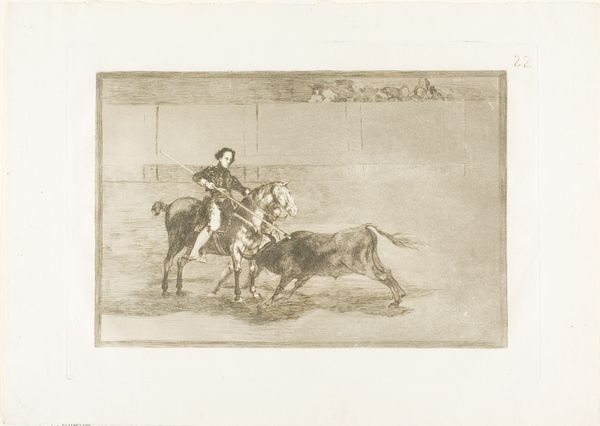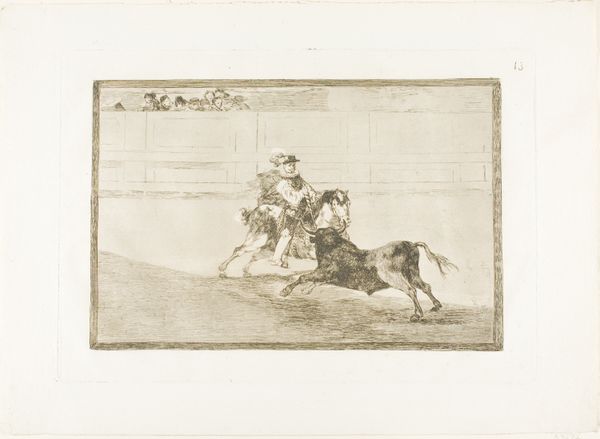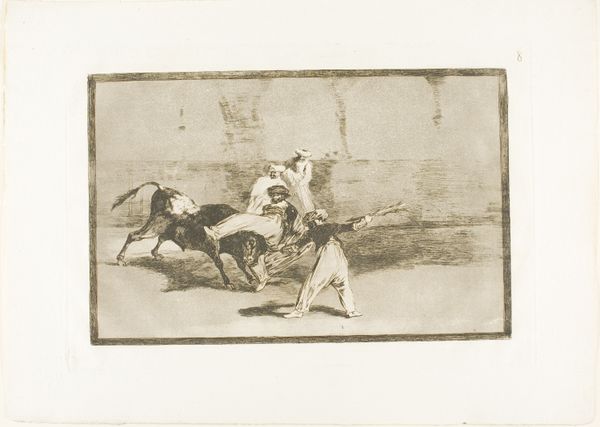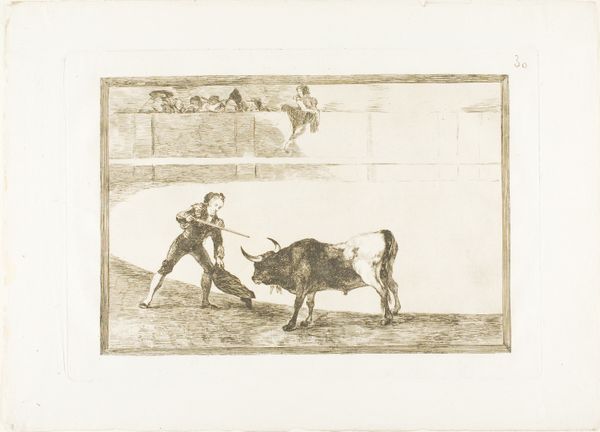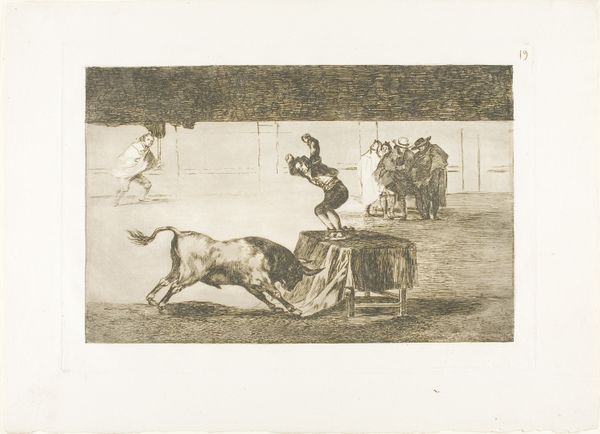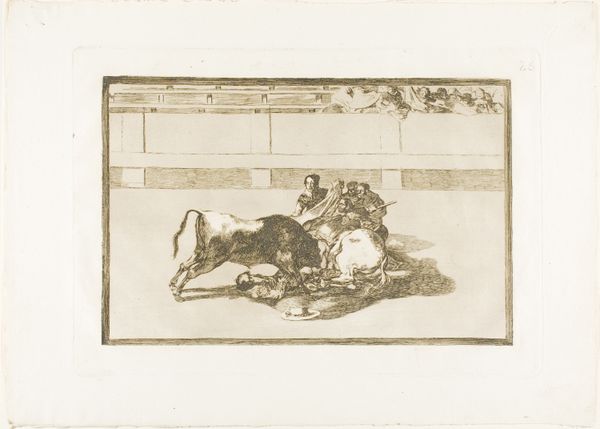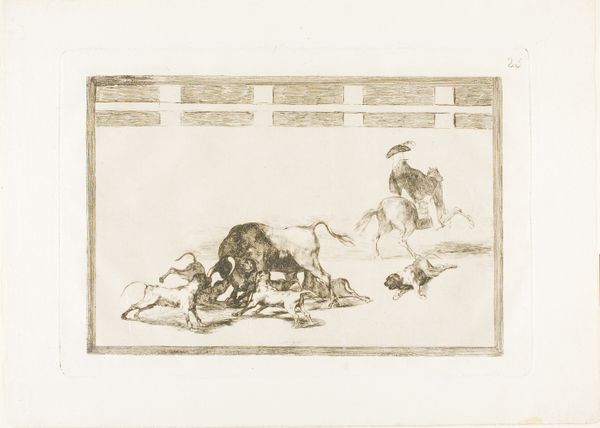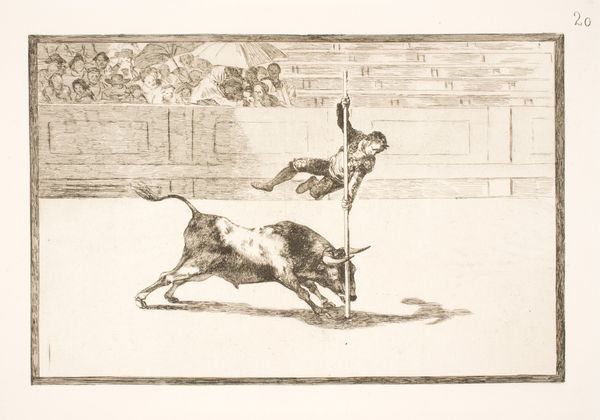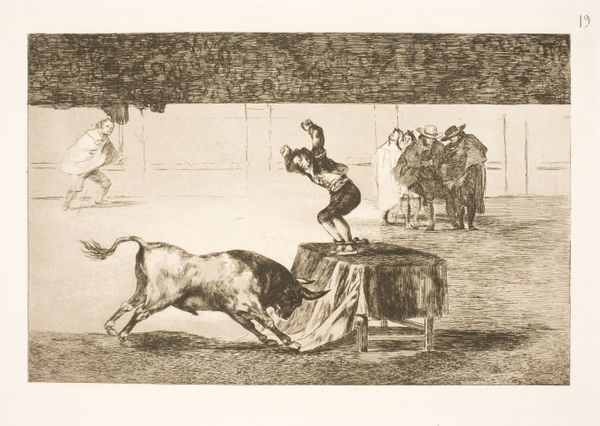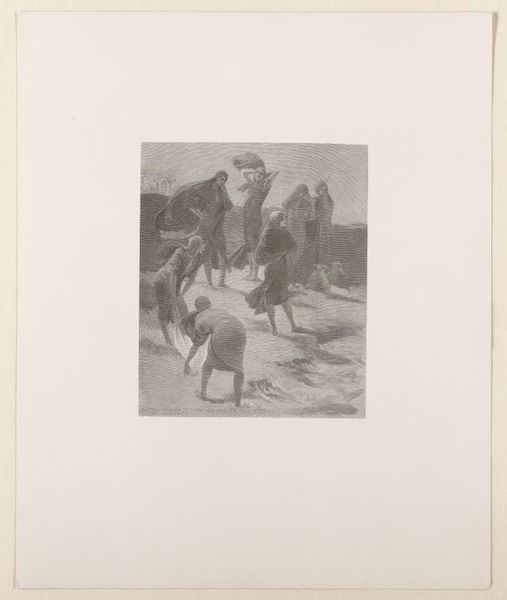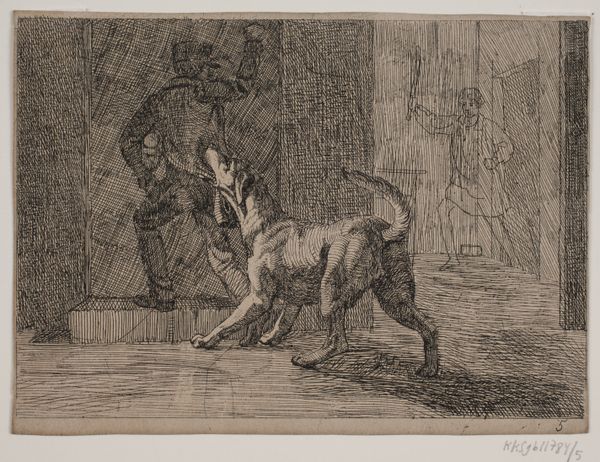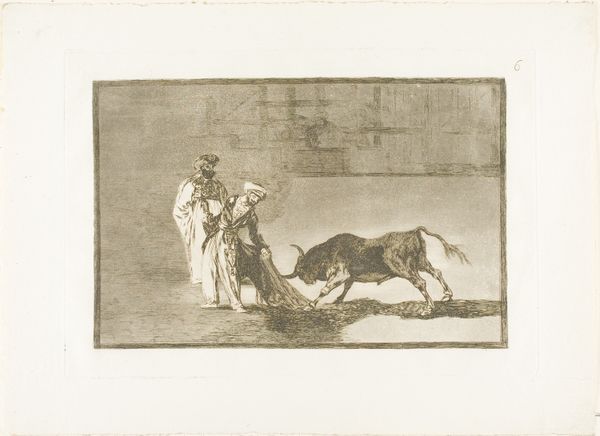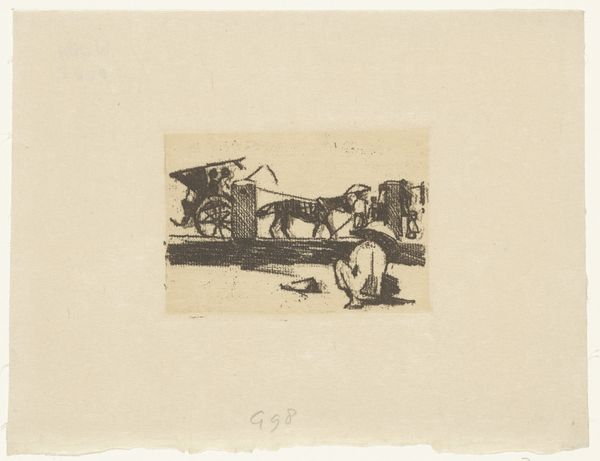
The Unlucky Death of Pepe Illo in the Ring at Madrid, plate 33 from The Art of Bullfighting Possibly 1814 - 1816
0:00
0:00
drawing, print, etching, paper
#
drawing
#
narrative-art
# print
#
etching
#
figuration
#
paper
#
genre-painting
#
history-painting
#
watercolor
Dimensions: 202 × 308 mm (image); 247 × 355 mm (plate); 316 × 447 mm (sheet)
Copyright: Public Domain
Curator: Here we have Francisco Goya's etching, "The Unlucky Death of Pepe Illo in the Ring at Madrid," likely created between 1814 and 1816. Editor: Oof. The title delivers. This isn't a celebration of bravery, is it? It feels like a raw, immediate scream caught in monochrome. Curator: Absolutely not. This work, part of Goya's "The Art of Bullfighting" series, dismantles the romantic notions surrounding bullfighting. Instead, it unveils the brutality inherent in the spectacle, specifically focusing here on the tragic fate of a real historical figure. Think of it within the broader context of the Peninsular War and Goya's searing social commentary in "The Disasters of War". Editor: The immediacy comes, I think, from the composition itself. We’re right there in the ring, no pomp and circumstance, just dust and desperation. The bull is all dark mass and fury, a dark storm of muscle… then you see poor Pepe Illo beneath. The other figures, they’re not heroic, just… chaotic. Curator: It speaks to a deconstruction of power, really. Bullfighting was often allegorized as the triumph of man over beast, civilization over nature, right? But here, Goya inverts that. The fragility of human existence is put on display. The hierarchy is disrupted by death’s caprice. There is definitely a racial element at play here as well: the bull represents the "Iberian" animal, while the fallen toreador symbolizes foreign aristocracy. Editor: Right, you see that fragility mirrored in the lines themselves – that loose, scratchy etching conveying not grace, but struggle and the almost casual indifference of the crowd, even of the matador trying to intervene! Curator: Yes, that etcher’s line performs affect here. And do observe that the numbered series title includes the term "art," it feels rather ironic in how it undermines a sense of heroism within a practice which often had social or even ethnic undertones in Goya's time. Editor: I initially came in bracing myself, maybe assuming a heroic painting; but I found something unflinching and unsettling instead – more like a glimpse into a collective trauma. Curator: Precisely. Goya masterfully uses this historical event to meditate on broader issues of violence, fate, and social inequalities. I am glad that its impact has endured in your sensitivity to injustice!
Comments
No comments
Be the first to comment and join the conversation on the ultimate creative platform.
